Allgemeine SS 8th Standarte Cuff Title
SKU: 50.GOR.02.03.02.03.02.03.008
Estimated market value:
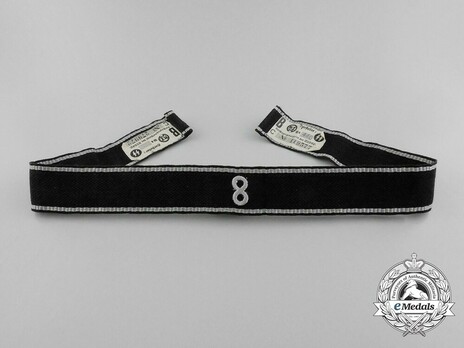
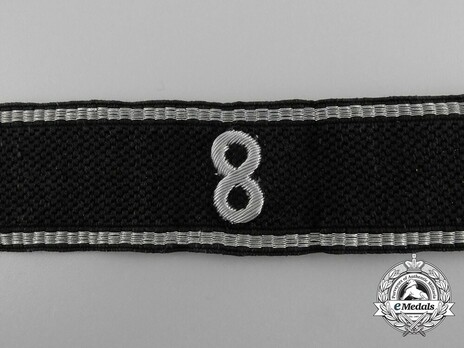
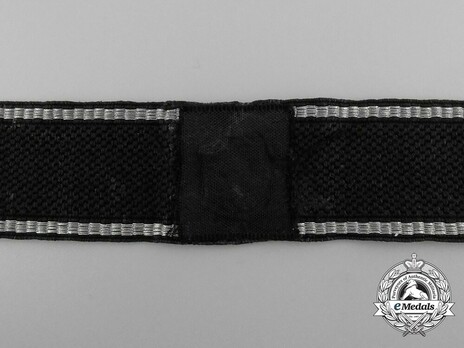
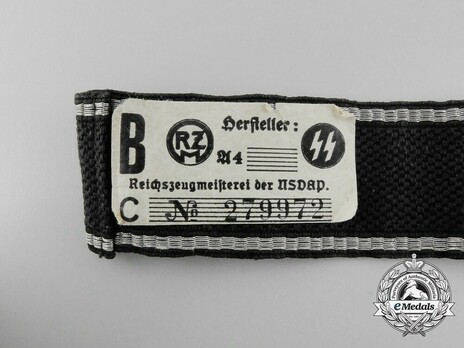
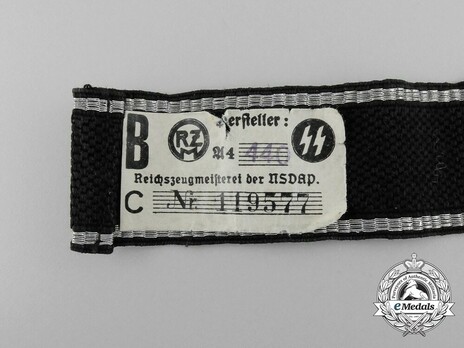
Estimated market value:
Attributes
History
The Allgemeine SS used cuff titles produced in several different ways.
Machine-embroidered cuff titles were manufactured by machine-embroidering wording or numbers onto a strip of blank cuff title material. The embroidery was usually done in white/silver/grey thread and the thickness varies. The average length of this style of cuff title is 49cm, with the shortest being 41cm and the longest at 50cm.
These cuff titles are generally found with an RZM paper or woven label attached to the reverse, although it is not uncommon for the label to be missing. At times, a cuff title would have two labels attached as two different manufacturers were responsible for the production of the items (one firm produced the band, the other did the embroidery work).
The ‘chain-stitch’ style of machine embroidery is occasionally encountered. The name is in reference to the chain-like appearance of the embroidery.
Hand-embroidered cuff titles were produced by hand-embroidering wording/numbers onto a blank cuff title. Fine aluminium wires were generally used in the production of these cuff titles, although silver and gold thread, as well as yellow or white synthetic thread, were also used. These cuff titles are generally found with RZM paper or woven labels. This style of manufacture was popular until 1939/1940 and fell out of favour due to the cost.
Another type of cuff title is the machine-woven one, which was produced by feeding coloured threads into a machine where they are woven into a design.
Woven flatwire cuff titles were produced using aluminium, silver, white celleon, or gold/yellow celleon to create wording/numbering. The term ‘flatwire’ refers to the fact that the fine threads lay flat, unlike hand-embroidery which is raised. There are two types of flat wire weave cuff titles, form 1 and form 2.
Form 1 flat wire weave cuff titles feature a salt-and-pepper reverse and form 2 flat wire weave cuff titles feature an all black reverse with a protective cloth backing sewn over the wording. The inscription on form 2 was produced using much finer aluminium thread than form 1.
The RZM/SS paper labels feature a rating letter (example: A) in the upper left corner, an RZM symbol to the right of the rating letter, then a manufacturer’s code number, and then an SS symbol in the upper right corner. The lower left corner features a sequence letter (example: D) and to the right the sequence number of the manufactured cuff title.
RZM/SS woven labels are black in colour, feature an RZM logo on the left side, then the manufacturer's code above the last two digits of the production year, and finally, an SS symbol on the right side.
RZM/SS ‘St’ woven labels, which were attached by the firm that embroidered the cuff titles are identical to the standard woven label, except ‘St’ is added before the manufacturer's code and year or production.
The Allgemeine SS divided Germany into a series of districts (SS-Oberabschnitte) that roughly corresponded with the Germany Army’s military districts (Wehrkreise). Each district was divided into several sub-district (SS-Abschnitte), to which a number of regiments (SS-Standarten) were deployed. A list of regiments can be found in Angolia’s “Cloth Insignia of the SS”, pages 91-94.
These cuff titles were also worn by Sturmbann staff members after 1937. Men and Officers on the staff of a Sturmbann were issued cuff titles with silver borders and an embroidered Roman numeral, while staff members of a Reserve-Sturmbann were issued blank cuff titles with silver borders.
Prior to 1937, Sturmbann staff wore blank cuff titles that had coloured borders. The coloured borders identified which Sturmbann the individual was associated with. The colours of these Sturmbanne underwent a series of changes until 1937 when this system was discontinued. For more information regarding these cuff titles, refer to the Sturmbann Cuff Titles section.
As of March 13th, 1933, Officers on the staff of an SS-Standarte wore cuff titles with silver borders and the number of the Standarte (Arabic numerals). Men on the staff wore cuff titles with white borders and the number of the Standarte. In November of 1934, the white borders were changed to aluminium borders.
As of June 1937, Officers of a Standarte with the rank of SS-Standartenführer and higher wore cuff titles with silver borders and the Arabic numeral of the Standarte. Men and Officers with a rank below SS-Standarteführer wore blank cuff titles with silver borders.
Prior to the introduction of this regulation, personnel were required to wear the Standarte number on a cuff title and on a collar tab.
Members of Standarten that received honorary titles wore cuff titles with the honorary name above their other cuff title.
The 8th SS-Standarte was based in Hirschberg, although it was originally formed in Liegnitz. It was usually referred to as SS-Standarte “Niederschlesien”.

Versions
$400 USD
Obv: 8
30x480mm
This version was worn by Officers.
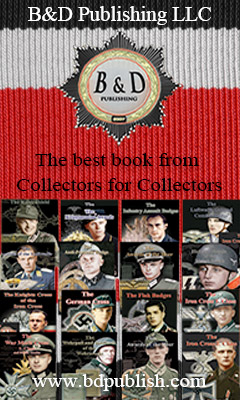
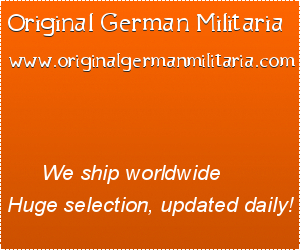
Comments
Sign in to comment and reply.


Scroll Top